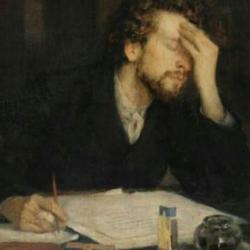In their “cultural history” of English drama, Simon Shepherd and Peter Womack summarize the argument of Glynne Wickham concerning the divorce of stage and sacred: “The English stage – so the argument runs – was predominantly a religious one until Elizabethan Protestantism forced a separation between theatre and the central concerns of faith; even then, the drama kept in touch with its sacred roots down to 1642; but after 1660 it went through a further phase of secularization which cut acting off from its ritual origins and restricted it, thematically and formally, to a rationalistic imitation of ‘manners.’ Theatre had been desacralized by the same cultural shift which had suppressed theatricality in religion: in Collier’s denunciations of the profaneness of the stage, we are hearing a religious man’s reaction to what had become a fundamentally secular type of representation.”
This covers, Shepherd and Womack admit, much of the evidence, but fails to account for differences of genre, which they characterized in terms of the “different grammars” possessed by the audience for comedy and tragedy respectively. While comedy is desacralized, tragedy is not. Citing Dryden’s Marriage a-la-Mode , they note that “the image of filial duty is particularly exalted because the apparent identity of the father changes at each new twist of the plot, which makes it clear that it is not a question of personal affection. It is pure duty, unmixed with the slightest coinciding feeling. This purity is exactly the point: the play manipulates the situations in order to produce the sharpest possible realization of the abstract principles it is seeking to stage. In this rather specialized sense, it is, like much heroic tragedy of the Restoration, a form of sacred drama, structured by an effort to make absolute metaphysical ideas visible in action.”
They go on to point out the Aristotelian “critical commonplace of the age . . . that tragedy is the stage equivalent of epic poetry, in which serious-minded poets represent noble actions and the doings of noble persons, while comedy, written by the more trivial-minded and concerning the meaner sort of people, corresponds to lampoon . . . . Comedy is thus inferior to tragedy in several superimposed senses: it is socially low instead of high, it depicts base actions instead of noble ones, and it encodes a non-serious attitude to life instead of a serious one.” The basic hierarchy of tragedy and comedy is not pity v. laughter, or death v. marriage, but high v. low. As a result, it’s “not quite accurate to see the profane figures of Restoration comedy – the inversion of obligation and pleasure, the sensual ‘devotions’ – as attacks on the elevated code of tragedy and heroic drama, or on the tenets of Christianity either. Rather the profanity complements the heroic, completing its image of a dualistic world which is material as well as ideal, creatural as well as intellectual, appetitive as well as juridical.”
The foundation of this dualistically formed stability is “social and political.” Nobles appear in Restoration comedy and tragedy, but “the difference that matters is that the interactions of serious drama happen at Court, whereas the characters of comedy are leading private lives . . . . Or, to put it more rigorously, the locus of serious drama is the State, whereas that of comedy is civil society. The clarity of the distinction is thus politically absolutist: the superiority of the State-as-serious over civil-society-as-comic is total and schematic. The relation between them is like master and slave, or king and fool: the values of the latter are licentious only because they are licensed, and their apparent rebelliousness really only part of a composite sign which denotes their absolute subordination.” In other words, “the profanity of Restoration comedy, its insouciant endorsement of faithlessness and impiety, makes sense inside monarchic ideology.”















